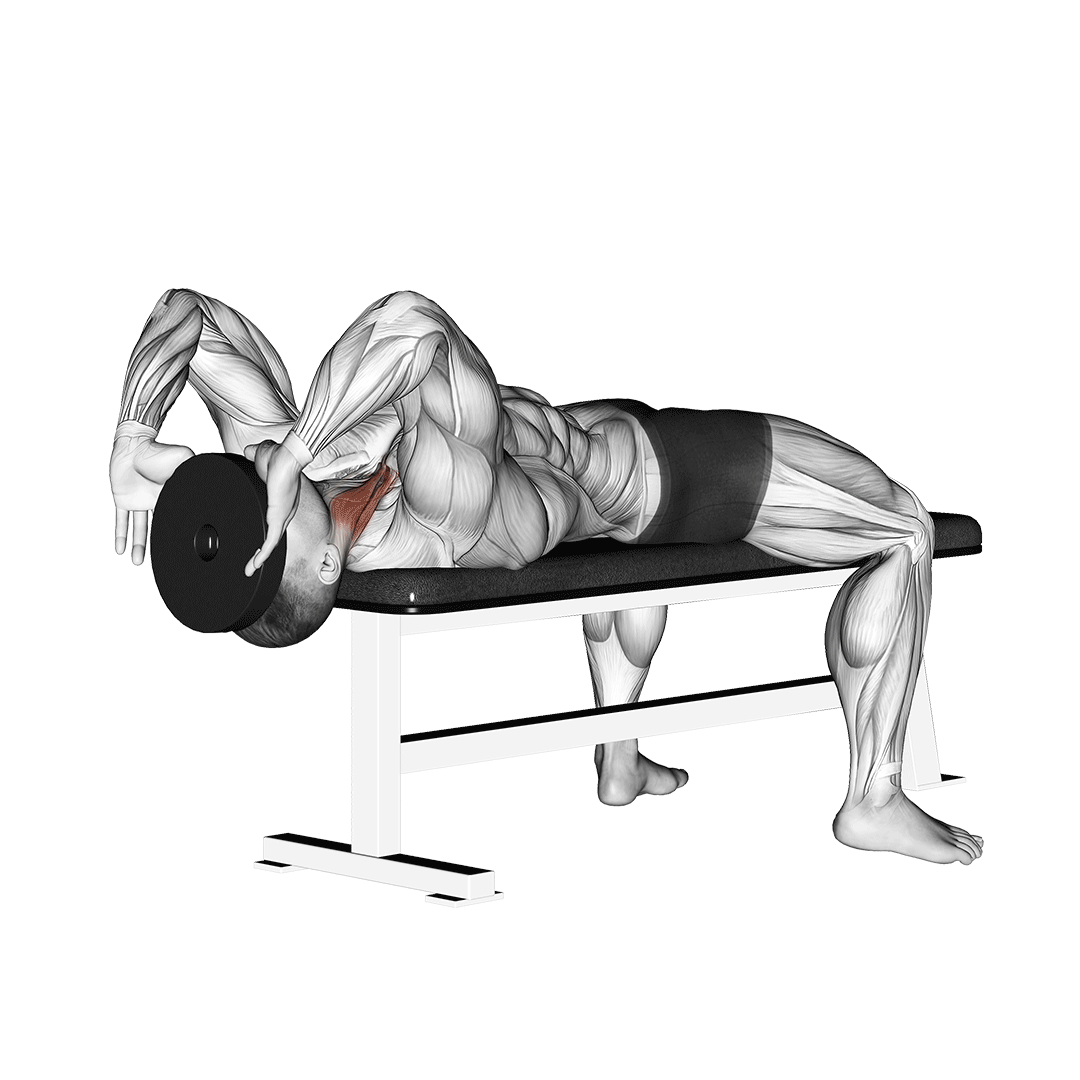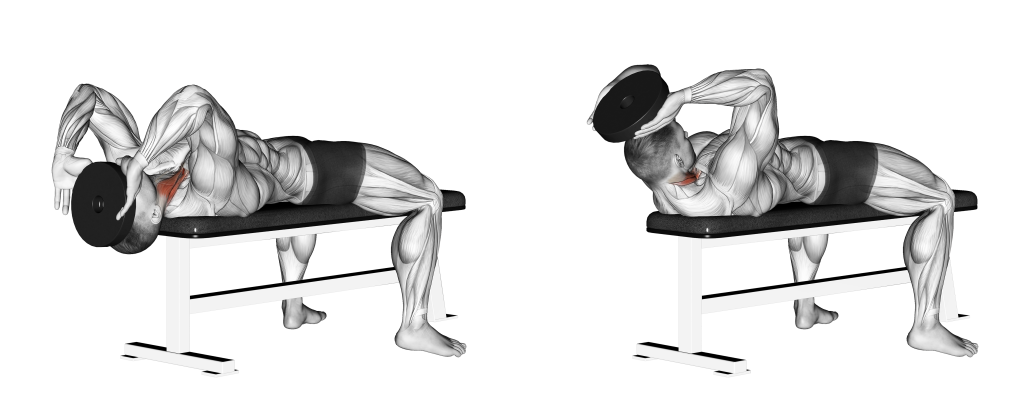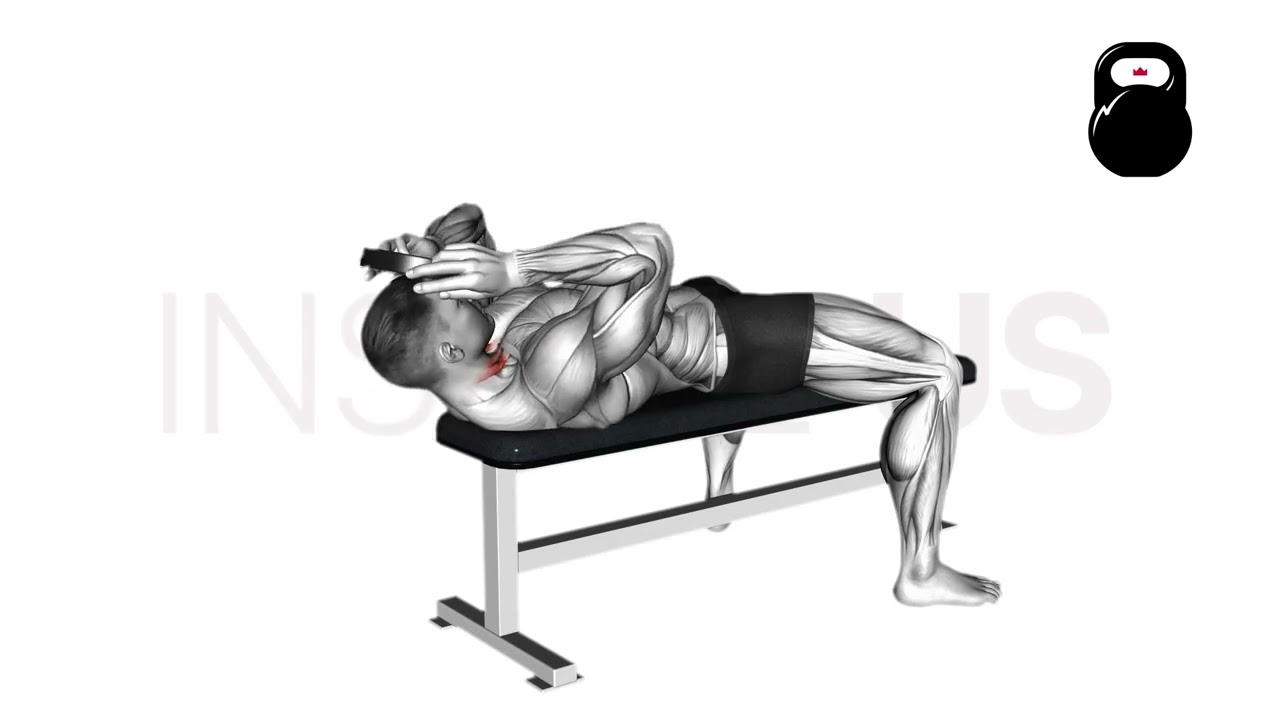Neck Curls Exercise Overview: Muscles Worked and More
Neck curls are a weighted isolation exercise meant to target the sternocleidomastoid and other adjacent neck musculature.
Exactly as its name implies, neck curls are performed by having the lifter quite literally curl a weight plate upwards as they suspend their neck off a bench.
Neck Curls at a Glance
Equipment Requirements
Exercise Bench or Similar Platform, Weight Plate
Main Muscles Targeted
Anterior Neck
Difficulty
Moderate
Sets, Reps, and Load Recommendations
2-4 Sets of 12-20 Repetitions at a Light Load
Equipment Notes for Neck Curls
The basic variation of lying neck curl requires only a weight plate and a platform several feet off the ground.
An exercise bench, plyometric box or even a bed can suffice - so long as the head has enough space to curl backwards without touching the floor.
How to Do a Neck Curl
- To perform a repetition of neck curls, the lifter will begin by lying flat on their back atop the exercise bench, a weight plate held between both hands atop their forehead.
The body should be positioned so that the upper back is pressed flush against the edge of the bench, the head and neck suspended in the air behind them. - Keeping the chin partially tucked into the neck, the lifter then allows the weight of the plate to slowly tilt their head backwards until reaching the limits of their range of motion.
Tension must be kept in the neck by tucking the chin and applying a light level of resistance to the bottom of the plate. - Once near the limit of their neck’s range of mobility, the lifter curls their head upwards and forwards - stopping once they’ve reached a point where the trapezius begins to raise alongside the neck. At this point, the repetition is considered to be completed.
Additional Tips:
With how heavy most weight plates can be, directly resting one on your forehead can be quite uncomfortable.
Placing a cloth (or some sort of hat) along the forehead can act as a cushion and greatly enhance the comfortability of the exercise.
What Muscles Do Neck Curls Work?
Though the majority of the neck’s major musculature is contracted simultaneously when performing a neck curl, it is the sternocleidomastoid muscles that are worked to the greatest degree.

Apart from the sternocleidomastoid, the scalene muscles will also act as stabilizers - keeping the head facing upwards as the more anterior-positioned sternocleidomastoid is dynamically contracted.
Finally, the upper section of the trapezius muscles are also contracted to some small degree by neck curls.
Common Neck Curl Mistakes to Avoid
Though a seemingly simple movement, neck curls can be quite dangerous when performed incorrectly.
Avoid the following common mistakes, as they can easily result in acute injury to one of the most critical parts of the upper body.
Jerky or Uncontrolled Movements
It goes without saying that performing neck curls with an unnecessary amount of momentum will only deter your progress - if not outright injure you as well.
Aim to use as minimal weight as possible, ensuring that each portion of the range of motion is completed in a slow and controlled manner. Do not allow your head to jerk backwards or to violently swing upwards, as both can lead to whiplash-like injuries.
Using Excessive Amounts of Weight
As mentioned in the previous entry, performing neck curls with more weight than you are safely able to lift can easily result in injury.

Aim for a load that can be safely lifted for up to 20 repetitions with no break in proper form adherence.
Performing a Crunch or a Skullcrusher
One common mistake seen with neck curls is the use of muscles other than the neck itself.
Doing so can lead to poor stability and a lack of training response from the neck musculature, as the emphasis of the exercise will shift towards these other muscle groups.
If the upper back consistently raises off the bench at the end of each repetition, then the abdominal muscles are being incorrectly recruited, and the lifter should seek to position their upper back closer to the edge of the bench.
Likewise, if little contraction in the neck is felt but the upper back remains flat and properly positioned, then it is likely the muscles of the arms are being worked instead. Correcting this issue may require an adjustment of your grip or otherwise positioning your upper arms so that the elbows flare outwards.
Who Should Do Neck Curls?
Like many other uncommon exercises, the neck curl can be a highly effective tool when utilized in the right context.
Contact sport athletes, individuals wishing for a thicker neck and those with poor head posture can all take advantage of the neck curl’s many benefits.
That being said, neck curls are an exercise that must be performed with due caution paid to injury risk. Ensure none of the aforementioned common mistakes are present in your training, and that you have full approval from a medical professional prior to attempting neck curls.
References
1. Attwood MJ, Hudd L-JW, Roberts SP, Irwin G, Stokes KA. Eight Weeks of Self-Resisted Neck Strength Training Improves Neck Strength in Age-Grade Rugby Union Players: A Pilot Randomized Controlled Trial. Sports Health. 2022;14(4):500-507. doi:10.1177/19417381211044736

